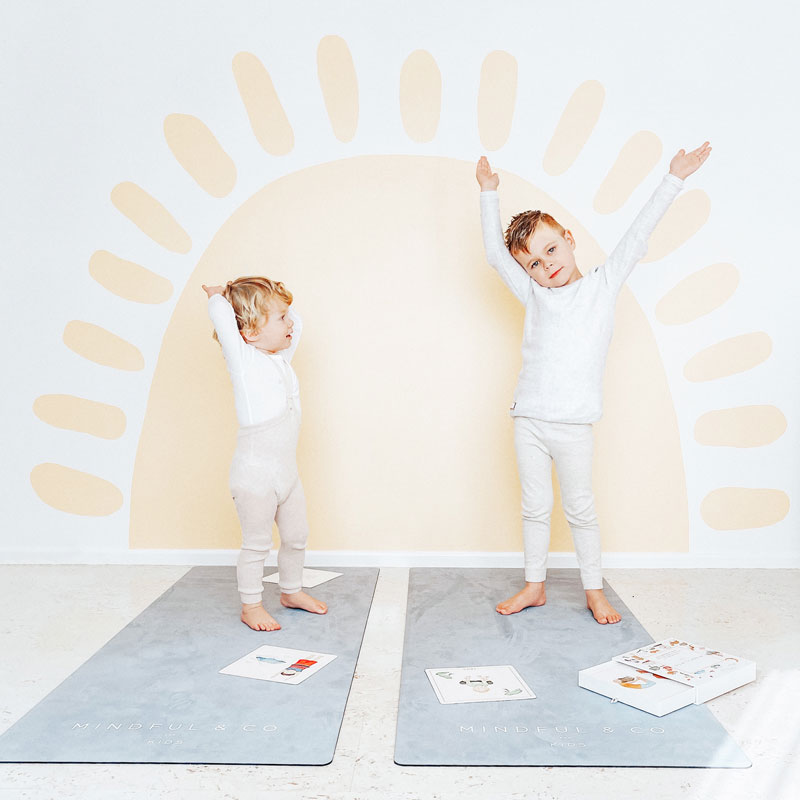Neurodiversity is a key factor in the ever-changing world of development for children. Children suffering from conditions like ADHD and autism need a safe and supportive environment in order to help them flourish. The synergy between ADHD support toys as well as autism sensory toys sensory integration toys and mindfulness toys is what happens. Teachers and caregivers can enhance their children’s lives through incorporating these elements in daily activities. For more information, click ADHD support for children

ADHD Assistance for Children: Enhancing focus and confidence
Children suffering from ADHD are often faced with difficulties in managing their focus and controlling their the impulses. To provide effective support it’s important to employ strategies that engage their brains and respect their uniqueness. While on this journey with children, toys that are mindful, which encourage calmness and meditation, can prove useful. They are a tactile toy that aid in calming restlessness, while instructing children on how to change their focus. Utilizing mindfulness techniques to play can aid in managing ADHD symptoms and help teach youngsters valuable life skills like emotional regulation, stress reduction, and stress management.
Autism Sensory Play: Nurturing Exploration and Expression
Children with autism encounter sensory experiences that can be both stimulating and challenging. Autism sensory play focuses on creating an environment to stimulate the senses while supporting the development of essential abilities. Sensory integration tools play an essential part in this process. They engage multiple senses at the same time, encouraging sensory exploration, coordination and cognitive development. Through tactile, auditory, and visual interaction children learn to comprehend their surroundings and communicate their experiences. Autism sensory play empowers children to express themselves and develop their self-confidence.
Sensory integration toys: building bridges for the child’s development
Sensory integration toys act as bridges for children to be connected with the world around them. These toys come in a variety of textures, sizes and shapes that focus on different sensorimotor skills and abilities. They allow children to explore and adapt to sensory input, which ultimately aids in the development of the skills for sensory processing. Sensory integration toys provide three main advantages:
1. Enhanced Sensory perception: Sensory integration toys expose youngsters to different auditory, tactile, as well as visual stimuli. This exposure allows their brains better process sensory data, improving their response to the stimuli.
2. To control a wide range of sensory toys, you have to be able to use fine motor skills and hand-eye coordination. These toys help children improve their motor and dexterity that result in improved physical control and confidence.
3. Multisensory toys stimulate multiple brain regions simultaneously. This stimulation can aid in cognitive growth, by encouraging connections between various neuronal pathways. It also enhances problem-solving ability and creativity.
Mindful Toys for Kids: Cultivating Calmness And Concentration
Mindfulness has become increasingly popular due to its positive impact on mental well-being. Mindful toys that are suitable for children incorporate elements of mindfulness into play, encouraging children to be active and attentive. These toys typically involve tasks that require concentration, such as coloring, puzzles or exercises for relaxation guided by a teacher. These games help children concentrate their attention and energy on the task and can be advantageous for them academically as well as socially.
In the exploration of ADHD support and autism sensory play, as well as mindfulness and sensory integration toys, it is vital to consider the overall strategy that arises from the interplay. These elements do not function independently, they are a team to cater to the various needs of children with neurodiverse needs. Incorporating sensory play and mindfulness routines into the daily routines of children allows caregivers to create an environment which is able to meet the sensory, cognitive and emotional needs at the same time.
To end, the journey to help children who have ADHD or autism requires embracing their strengths as well as challenges. By integrating sensory play the use of sensory-integration equipment, as well mindfulness practices, teachers and parents can create an environment that fosters development at multiple levels. If it’s helping to improve concentration, encouraging self-expression, enhancing sensorimotor processing, or promoting mindfulness, every component helps to provide a holistic approach to the development of children. We can unlock the potential in these strategies and create a more positive, inclusive future for children of all neurodiversities.


Building Connections: Social Skills And Sensory Activities For Kids With Autism
Neurodiversity is a key factor in the ever-changing world of development for children. Children suffering from conditions like ADHD and autism need a safe and supportive environment in order to help them flourish. The synergy between ADHD support toys as well as autism sensory toys sensory integration toys and mindfulness toys is what happens. Teachers and caregivers can enhance their children’s lives through incorporating these elements in daily activities. For more information, click ADHD support for children
ADHD Assistance for Children: Enhancing focus and confidence
Children suffering from ADHD are often faced with difficulties in managing their focus and controlling their the impulses. To provide effective support it’s important to employ strategies that engage their brains and respect their uniqueness. While on this journey with children, toys that are mindful, which encourage calmness and meditation, can prove useful. They are a tactile toy that aid in calming restlessness, while instructing children on how to change their focus. Utilizing mindfulness techniques to play can aid in managing ADHD symptoms and help teach youngsters valuable life skills like emotional regulation, stress reduction, and stress management.
Autism Sensory Play: Nurturing Exploration and Expression
Children with autism encounter sensory experiences that can be both stimulating and challenging. Autism sensory play focuses on creating an environment to stimulate the senses while supporting the development of essential abilities. Sensory integration tools play an essential part in this process. They engage multiple senses at the same time, encouraging sensory exploration, coordination and cognitive development. Through tactile, auditory, and visual interaction children learn to comprehend their surroundings and communicate their experiences. Autism sensory play empowers children to express themselves and develop their self-confidence.
Sensory integration toys: building bridges for the child’s development
Sensory integration toys act as bridges for children to be connected with the world around them. These toys come in a variety of textures, sizes and shapes that focus on different sensorimotor skills and abilities. They allow children to explore and adapt to sensory input, which ultimately aids in the development of the skills for sensory processing. Sensory integration toys provide three main advantages:
1. Enhanced Sensory perception: Sensory integration toys expose youngsters to different auditory, tactile, as well as visual stimuli. This exposure allows their brains better process sensory data, improving their response to the stimuli.
2. To control a wide range of sensory toys, you have to be able to use fine motor skills and hand-eye coordination. These toys help children improve their motor and dexterity that result in improved physical control and confidence.
3. Multisensory toys stimulate multiple brain regions simultaneously. This stimulation can aid in cognitive growth, by encouraging connections between various neuronal pathways. It also enhances problem-solving ability and creativity.
Mindful Toys for Kids: Cultivating Calmness And Concentration
Mindfulness has become increasingly popular due to its positive impact on mental well-being. Mindful toys that are suitable for children incorporate elements of mindfulness into play, encouraging children to be active and attentive. These toys typically involve tasks that require concentration, such as coloring, puzzles or exercises for relaxation guided by a teacher. These games help children concentrate their attention and energy on the task and can be advantageous for them academically as well as socially.
In the exploration of ADHD support and autism sensory play, as well as mindfulness and sensory integration toys, it is vital to consider the overall strategy that arises from the interplay. These elements do not function independently, they are a team to cater to the various needs of children with neurodiverse needs. Incorporating sensory play and mindfulness routines into the daily routines of children allows caregivers to create an environment which is able to meet the sensory, cognitive and emotional needs at the same time.
To end, the journey to help children who have ADHD or autism requires embracing their strengths as well as challenges. By integrating sensory play the use of sensory-integration equipment, as well mindfulness practices, teachers and parents can create an environment that fosters development at multiple levels. If it’s helping to improve concentration, encouraging self-expression, enhancing sensorimotor processing, or promoting mindfulness, every component helps to provide a holistic approach to the development of children. We can unlock the potential in these strategies and create a more positive, inclusive future for children of all neurodiversities.